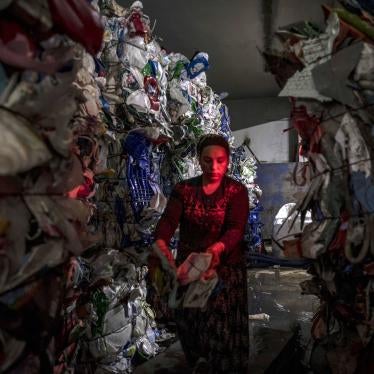Updated to correct the weapon that killed the journalists.
(New York) - The award-winning photographer and film-maker Tim Hetherington and the prize-winning photojournalist Chris Hondros were killed in Misrata on April 20, 2011, while covering the Libya conflict, Human Rights Watch said today. Two other photographers were wounded in the same attack. A photographer working with Human Rights Watch identified the victims at the Misrata hospital.
The men were hit by a mortar round while reporting on the fighting in Misrata.
Guy Martin, 28, a British freelance photographer, was wounded by shrapnel to the spleen and was in serious condition after an operation in Misrata. Michael Christopher Brown, another freelance photographer, was also wounded by shrapnel in the incident.
The bodies of Hetherington, 40, and Hondros, 41, were taken from Misrata to Benghazi by the International Organization for Migration aboard the Ionian Spirit, which had been brought in to evacuate civilians from Misrata. Martin and Brown remained in the hospital in Misrata.
Hetherington, who was nominated for an Academy Award for "Restrepo," a documentary film made with the author Sebastian Junger about a US combat unit in Afghanistan, died shortly after the attack. Hetherington worked closely with Human Rights Watch. Hondros, who was a Pulitzer finalist, received many awards including the Overseas Press Club's Robert Capa Gold Medal for his work in Iraq. He died several hours later in the hospital.
Human Rights Watch extends its condolences to the friends and families of both men, who spent their professional lives documenting human rights abuses, especially in armed conflicts. Human Rights Watch repeated its call to the Libyan government to cease unlawful attacks against civilian areas in Misrata.
Hetherington lived in Monrovia, Liberia for eight years during the brutal civil war that engulfed Liberia and neighboring countries. The film that Hetherington co-directed, "Liberia: An Uncivil War," and his book, "Long Story Bit by Bit: Liberia Retold," did more than any other body of work to document the conflict, focusing on individual Liberians and allowing them to tell their stories in their own words.







